Croatian Traditional Jewellery: Istria's Medieval Earrings, Rediscovered
February 25th, 2022 - Medieval earrings discovered on several archaeological sites in Istria served as inspiration for authentic souvenirs: beautiful replicas in silver and gold, made by local artisans
Our ancestors seem to have loved shiny things as much as we did: traditional garb in all parts of Croatia included precious jewellery pieces such as earrings, bracelets, brooches and pendants.
Some date back to medieval, ancient or even prehistoric times, and are nowadays displayed as museum exhibits. Others have stood the test of time, with traditional motifs passed down from generation to generation and remaining popular accessories to this day.
And then there’s some traditional jewellery that falls into both these categories. Medieval earrings found on several archaeological sites in Istria were rediscovered in recent times and recreated with beautiful replicas in silver and gold, made by local artisans and whoheartedly embraced by the public.
The initiative to revive the ancient heritage of Istria in the form of jewellery largely came from goldsmith Klaudija Vorić, owner of Claudia Zlato jewellery shop in Svetvinčenat, now closed. Since the early 2000s, Vorić had been making jewellery inspired by traditional Istrian symbols. About ten years ago, she launched the initiative to make replicas of historic earrings in order to create high quality souvenirs for each given destination in cooperation with local authorities and relevant tourist boards. Vorić was the one responsible for the revival of Žminj, Buzet and Barban earrings on this list, and it's only right we give credit where credit is due.
Join us on a little themed tour of Istria as discover accessories of times past that now have their modern versions, readily available to all who wish to wear a piece of history.
Žminj earrings / Žminjski rićin
It’s said that all the roads in Istria lead to Žminj, so it only makes sense to start our journey in this picturesque inland town.
Earrings and rings were uncovered at the early Croatian cemetery in Žminj, showing that the local women used to wear jewellery as early as in the 9th century. How’s that for tradition?

The earrings found at the necropolis were part of the rural folk costume worn in the Žminj area in the 9th and 10th centuries. They were made of silver and bronze and are grouped into several categories according to design and origin, with the most prominent type featuring so-called ‘strawberries’, hollow granules made of silver with elements of filigree and mesh. Some feature closed hoops, pointing to the fact they were most likely worn interwoven in hair or looped on hair strings.
Nowadays, the original finds are kept at the Archaeological Museum of Istria in Pula. They inspired a beautiful authentic souvenir, the Žminjski rićin (Žminj earring), designed after the medieval pieces and slightly modified to fit modern standards of jewellery wear.
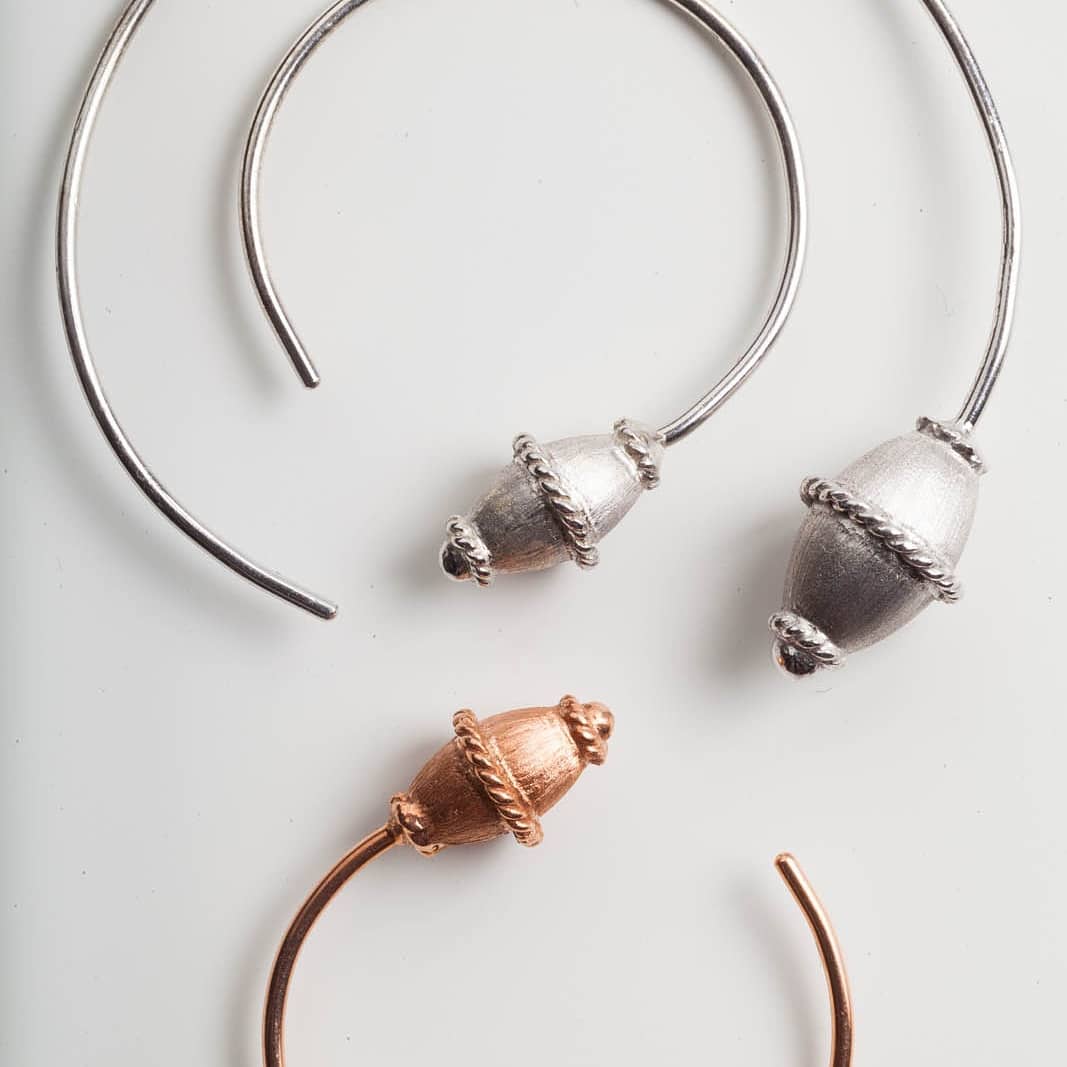
The gorgeous pieces are nowadays made of silver and gold, and are manufactured in Pula by David jewellery.
In Žminj, earrings and rings are available for sale at the floral studio Heidi as a unique tourist souvenir, complete with a leaflet introducing the history of the Žminj jewellery in three languages.
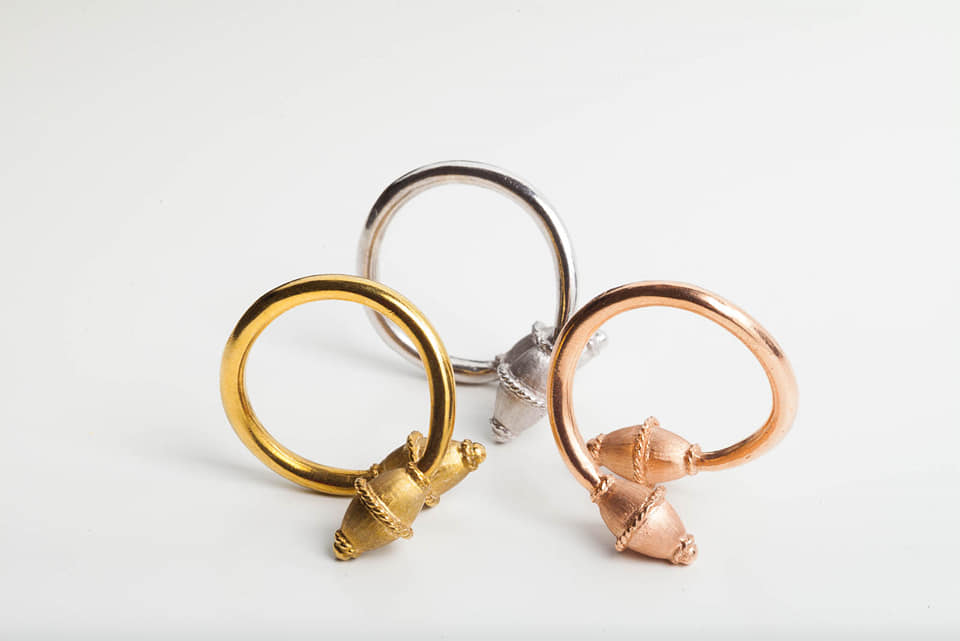 Žminj rings / Zlatarna David Facebook
Žminj rings / Zlatarna David Facebook
Barban earrings / Barbanski rančin
Earrings dating to the 11th century were unearthed in the small town of Barban. The medieval earrings have the form of a hoop with three small beads adorning the bottom part.
Similar to the ones found in Žminj, they were determined to be a part of folk costume typical for the period between the 11th century, when Istria was a part of the Holy Roman Empire, to the beginning of the 14th century when the region was taken over by the Venetian Republic.

Medieval Barban earring / Archaeological Museum of Istria
The initiative to bring the traditional Barban earrings into the modern era was also launched by Claudia Zlato jewellery, with the project devised by Jasminka Benazić and executed in cooperation with the Archaeological Museum of Istria, the Municipality of Barban and the Barban Tourist Board.
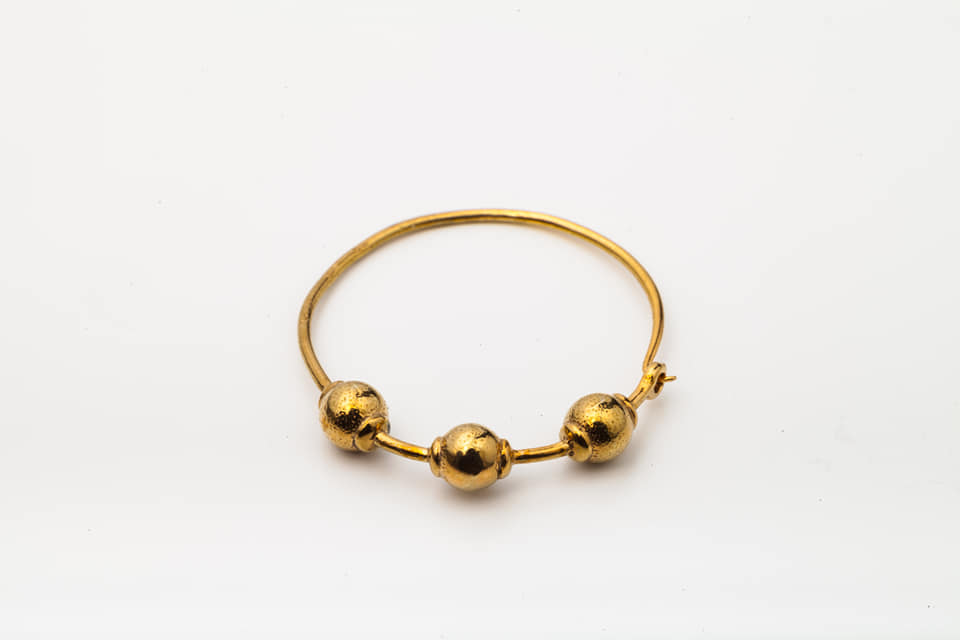 Barban earring / Zlatarna David Facebook
Barban earring / Zlatarna David Facebook
The result are beautiful wearable earrings, made in several sizes and materials and inspired by the cultural heritage of Barban.
Dvigrad earrings / Rančin Dvegrajka
On to Dvigrad, a ruinous medieval town in Limska Draga valley, where two unique types of earrings were discovered, made of bronze and dating to the 9th century.
Both types are simple hoops, one with a thin wire wrapped around the bottom part (see image below), the other adorned with a bead. Several other kinds of earrings were found in the Dvigrad area, but since they share features with various types discovered on archaeological sites elsewhere in Istria, it was decided to only make replicas of the two designs unique to Dvigrad.
The wearable souvenirs are made by David jewellery from Pula, whose owner, goldsmith Luiđi Đinić, said it takes up to five hours to make a single pair. The delicate hoops are entirely handmade, and available in silver, silver-gilt, and silver gilded rose gold versions.
Like the other artefacts, the historic Dvigrad earrings are kept at the Archaeological Museum of Istria and were declared a cultural asset of the Republic of Croatia back in 1968.
Buzet earring / Buzetska naušnica
Delicious truffles aren’t the only precious thing found in the north of Istria, as the history of the hilltop town of Buzet and its environs goes all the way back to the Bronze Age.
It doesn’t come as a surprise that beautiful historic jewellery was discovered in Buzet as well, a type of bronze earring dating to the 7th century and known as the Buzet earring in archaeological literature.
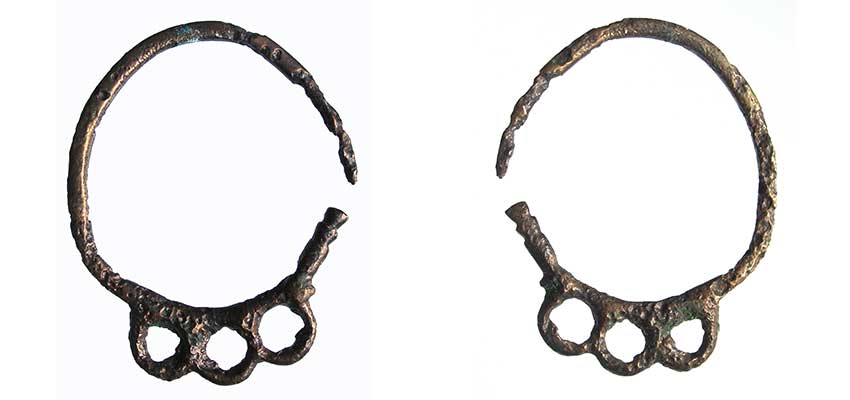 Medieval Buzet earrings / Buzet Tourist Board
Medieval Buzet earrings / Buzet Tourist Board
Bronze earrings are most commonly found at the early medieval burial grounds of the native population and the Illyrian-Celtic people who inhabited the area between Buzet and the west coast of Istria.
The original pieces are kept at the Regional Museum of Buzet, and a silver replica was created as an authentic souvenir of Buzet. Two kinds are available, one being a near identical copy of the medieval earrings, other slightly modified and equipped with a clasp to be more easily wearable.
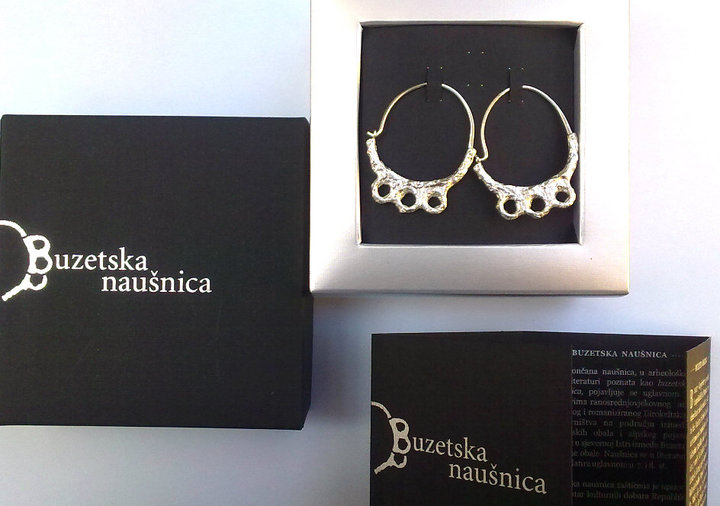 Buzet earring / Buzet Tourist Board
Buzet earring / Buzet Tourist Board
Umag earrings / Umaška naušnica
We’ll end our little tour in Umag, a coastal town in the north-west of Istria. Although best known for the ATP tournament, Umag has much more to boast, including priceless historic finds such as the so-called Umag earring.
The bronze earring is shaped as an elliptical hoop adorned with three beads and a large engraved pendant, altogether cast in a one piece mold. It was found during archaeological research conducted in Umag in 2005, at the ruins of an early medieval church that burned down in the 9th century.
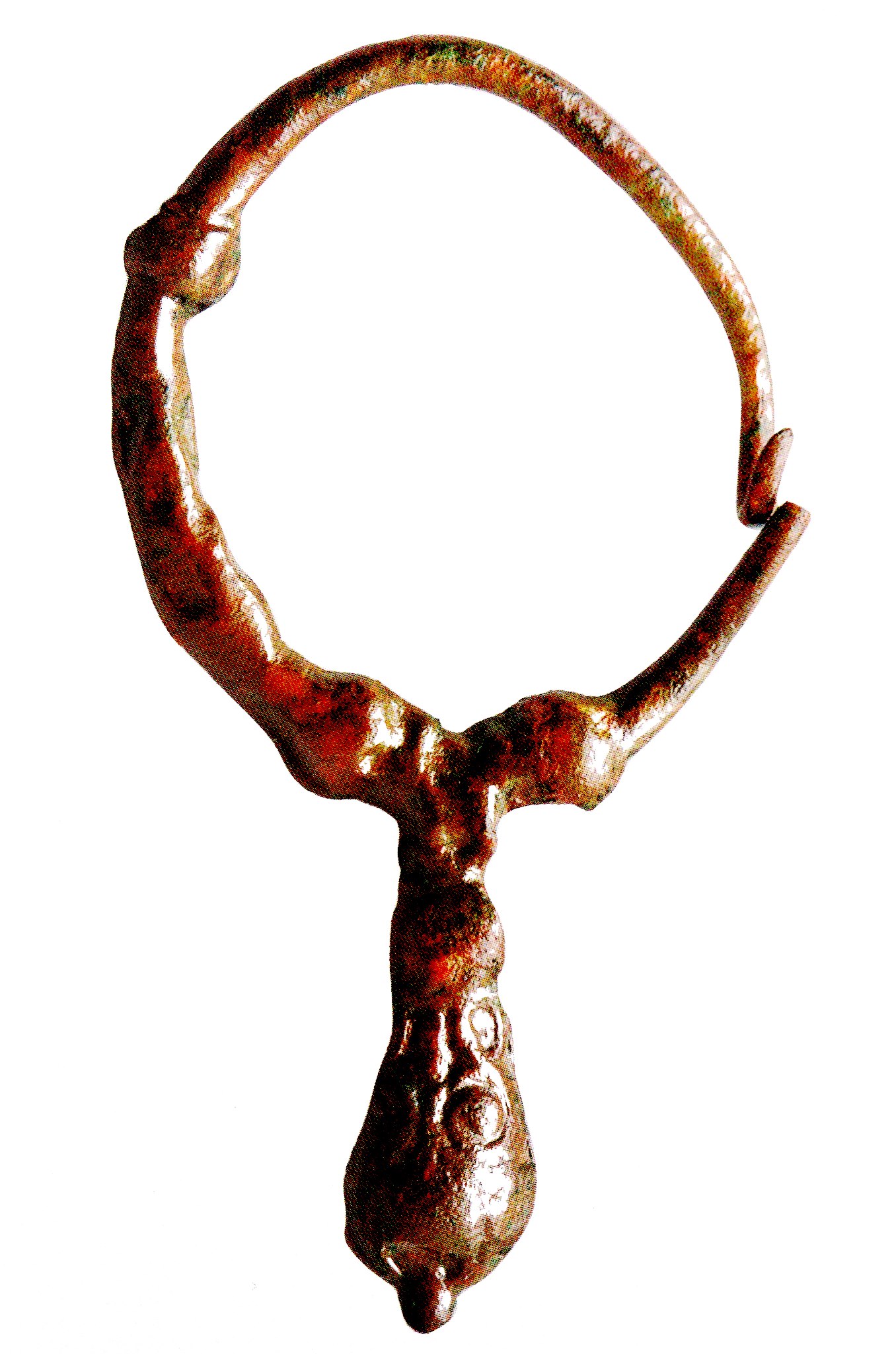
A silver replica was made by the local goldsmith and filigree master Njaci Široka, creating an original Umag souvenir that is available for sale in his shop.
Zminj Entrepreneur Opens "Drive in" Coffee Tent - Concept Not Permitted
December the 3rd, 2020 - The current restrictions have placed a strain on all those out there missing sitting down in a cafe and spending three hours or so nursing a couple of cups of coffee. While there are certainly bigger concerns at play than caffeine fixes, one Zminj entrepreneur decided to take matters into his own hands...
As Poslovni Dnevnik writes, Zminj entrepreneur Antonio Debeljuh opened the very first "drive in" coffee bar in Istria. He created the concept out of his own cafe as an result of the recently introduced measures of the National Civil Protection Headquarters that ordered the closure of all coffee bars and the like. However, as soon as he opened it, he had to close down it due to the latest measures. Despite the fact that its "drive in" facility is practically the same as a similar service at McDonalds - it is a cafe, not a restaurant, so it must be closed, local portal Glas Istre writes.
It's worth mentioning that the Zminj entrepreneur's drive in idea was well received and people came in their cars to buy coffee. Debeljuh was satisfied because jobs were saved and work continued, and he adjusted all the conditions to this new method of work. He set up a tent, adjusted the tent's window and worked according to all of the anti-epidemic rules.
"If we were to dispense the coffee at the door of the facility across the table as some of our other colleagues do, who are still allowed to work because they aren't registered as coffee bars, there's a greater possibility of infection because the entrance becomes crowded. We do it our ''drive in'' way and on the first day of lockdown (Saturday, op. Cit.) went really well. On the second day, we received a call from the state inspectorate that we should close because we're not entered into the category of people serving food and drink,'' Antonio Debeljuh stated.
''I’m constantly thinking about the difference between issuing food and drink and us, and I still don’t understand it whatsoever. We made an effort, we endured sleepless nights in order to bring the project to life, froze during the installation of the tent, and in the morning at 06:30 we still happily welcomed our first guests with masks, in thick jackets, under the heater. It doesn't matter anymore anyway, because we've been stopped,'' says the desperate Antonio Debeljuh.
Zeljko Plavcic, the mayor of Zminj, was also approached and asked to say what he thinks about everything:
"This is the precedent of all precedents. It isn't right, nor equal to everyone, nor does everyone have the same treatment. You can get ''to go'' coffee in any restaurant, and yet this idea isn't permitted. I'm disappointed,'' said Plavcic, who will try to contact the headquarters to see if a possible exception can be made for this Zminj entrepreneur's idea.
For the latest travel info, bookmark our main travel info article, which is updated daily.
Read the Croatian Travel Update in your language - now available in 24 languages
Istria: Koreans Interested in Culture and Tourism Cooperation
As Glas Istre/Andjelo Dagostin/Gordana Calic Sverko writes on the 3rd of June, 2019, last week, a visit of foreign delegations to Istria took place. Istria's Zminj municipality was visited by a high delegation from South Korea, led by a personal envoy of Korean Culture, Tourism and Sports Minister Shin Kinam. Along with his colleagues, they were hosted by Željko Plavčić of Žminj, on the occasion of the fifth Assembly of Čakavian poetry that was held in Žminj last weekend.
The previous delegation held meetings with Minister of Culture Nina Obuljen Koržinek and President of the Croatian Olympic Committee Zlatko Mateš, and after Žminj they visited Pula. Among the delegation was a film producer and university professor Baek Hak Gi, journalist from the United Press International Lee Sang Bong, president of EZ Entertainment and university professor Na Jungyoon, and visiting coordinator, translator and member of the American Association of Architects, Redden Soonyoung. Žminj and Istria were visited upon the recommendation of the Croatian Ambassador to South Korea, Damir Kušen.
In Istria, more specifically in Žminj, members of the delegation discussed the establishment of economic, cultural and tourist co-operation with Plavčić. Direct investment was not discussed because this was just an initial visit, however, Kinam expressed the desire to concretise cooperation at the next meeting in Seoul. Kinam himself personally joined the celebration of Čakavian poetry by bringing up Korean poetry. Kinam has spent four mandates in the South Korean Parliament, is an experienced writer and author of the contemporary novel "The Person I met in Dubrovnik" (Osoba koju sam sreo u Dubrovniku).
The meeting in Istria highlighted the fact that Croatia was visited more than 560,000 Koreans last year, contributing to the quality of traffic connections between Seoul and Zagreb, which is certainly a prerequisite for Žminj to become a ''station'' for Korean tourists, as well as artists who could find inspiration in this very quiet and picturesque region of Istria, with its rich gastronomic offer and cultural heritage.
Make sure to follow our dedicated lifestyle page for much more.
Istrian Easter Bread Pinca Going for Guinness Record!
The acclaimed manifestation in Žminj might end up breaking a record this year
Žminj Tourist Board Takes Away 'Simply the Best' Award for 2017
The Istrian gem gets deserved praise for three beloved manifestations
Good Tourist Results for Central Istria
A very good year for tourism in Croatia, including Central Istria.


